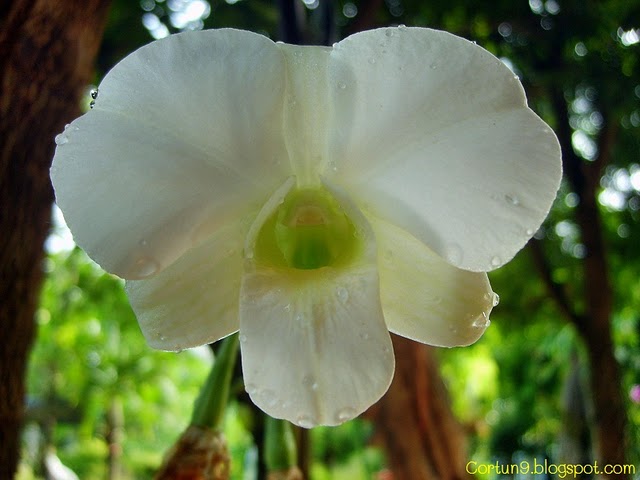Click a Picture for More Pictures & Info.
 |
| Dendrobium thyrsiflorum Rchb.f. |
+Orchids.JPG) |
| Den. cruentum x (Den. cruentum x Den. formosum) |
 |
| Dendrobium radio |
 |
| Dendrobium primulinum Laos |
 |
| Dendrobium pretty doll |
 |
| Dendrobium petal twist |
 |
| Dendrobium emerald gold |
 |
| Dendrobium (white dwarf) not recommended |
 |
| Dendrobium (pink dwarf) not recommended |
 |
| Dendrobium peguam not recommended |
 |
| Dendrobium (white) not recommended |
---------------------------------------------------------------------------
Dendrobium is a large genus of orchids. They contains about 1,200 species. The genus occurs in various habitats such as throughout much of south, east and southeast Asia, including China, Japan, India, the Philippines, Indonesia, Australia, New Guinea, Vietnam etc.
- In 1799, Olof Swartz establish Dendrobium genus.
- In 1981, Briegar reclassified all terete-leaved Dendrobiums from Australia and New Guinea into a new genus, Dockrillia. The Winika orchid from New Zealand was formerly D. cunninghamii, but has now been moved into a monotypic genus Winika
- In 1989, Clements upgraded the D. speciosum complex into individual species;[2] similarly, the D. bigibbum complex (which contains the well-known Cooktown Orchid of Australia, D. phalaenopsis) has recently been split up. However, as an illustration of the current revisions in the taxonomy of Orchidaceae these 'splits' have now been reversed and the currently accepted species, natural nothospecies and synonyms are presented on Wikispecies Dendrobium.
Dendrobium species are either epiphytic or lithophytic. They have adapted to a wide variety of habitats.
Dendrobium is sympodial-type of orchids. They develop pseudobulbs, which in length from less than 1 centimetre to several metres long, looklike canes. Leaf bases form sheaths that completely envelope the stem.
Ovate-leaves grow alternately over the whole length of the stems, Some species the leaves are bunched towards the apex of the stem. The axillary inflorescence in length from less to 1m long, and canes carry from a few to more 100 flowers. Deciduous species carry their leaves for one to two years then typically flower on leafless canes, while canes of evergreen species usually flower in the second year and can continue to flower for a number of years.
These orchids grow quickly throughout summer, but take a rest during winter. Dormant buds erupt into shoots from the base of the pseudobulb mainly in spring, and a few species in autumn. This is then followed by rapid growth of new roots. Reproduction is usually through seed.
Watering
Water in the morning
Light
Dendrobium need much light and not direct sun.
*********************************************************
Dendrobium orchids are epiphytes; Growing on clinging to branches of trees. Roots orchids have thick roots covered with silver or white velamen. Which adsorb moisture and nutrients from the air such as Plalaenopsis
The Orchid Growth
Sympodial; Orchids are growing that grow sideways across the top of the pot. These orchids have a rhizome at the base usually put in horizontal, The bud at the base will begin growing anther rhizome. and then ,The rizome develops into a small plant or pseudobulb, and flower. When pseudobulbs have completely healthy, It will lose its leaves celled this pseudobulbs that "backbulb". It served store feed more years before it die.
Orchids sympodial-type such as Paphiopedilum Dendrobium Cattleya Oncidium Bulbophyllum Grammatophyllum etc.
Roots Dendrobium Orchids
Semi-aerial roots : Usually found on the rocks or the trees. Roots can be absorbed many water. it smaller aerial roots. Most roots inside the pot. But may have some roots emerge outside the pot. This orchid roots not like a tight pots or wet for too long, Which getting air not enough. this roots orchids such as Cattleya, Cymbidium, Dendrobium and Oncidium.
Epiphytes ; Growing on clinging to branches of trees. Roots orchids have thick roots covered with silver or white velamen. Which adsorb moisture and nutrients from the air such as Plalaenopsis Cattleya Dendrobium etc.
